The brain has an internal 'model of the world' that runs during REM sleep

When you sleep and dream, your brain actually runs an internal "world model"!

Are there any of you who often cannot distinguish between dreams and reality? Sometimes the dreams are too realistic and a little scary, and it is common to be frightened awake.
A recent study conducted by two neuroscientists at the University of California, San Francisco has attracted attention.
They point out that when animals enter the dreamy sleep stage, the brain runs an internal "world model" to simulate interactions with the outside world.
The experimental results provide strong evidence that even if no actual movement occurs during sleep, the brain will simulate movement commands and show brain activity similar to that in the waking state.
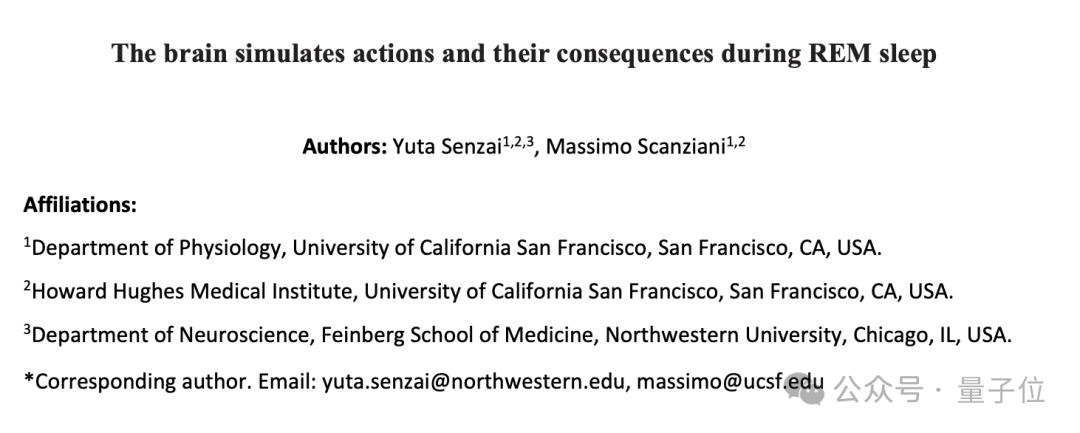 picture
picture
As soon as this research was posted, it was liked and forwarded by many scholars.
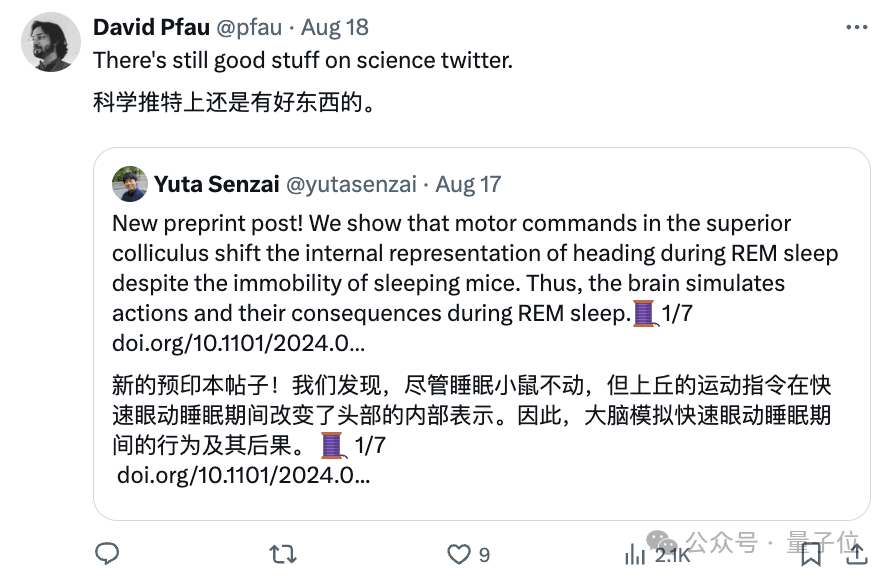 picture
picture
Some netizens also thought of applying the "dream simulation" method to AI to solve the problem of insufficient training data:
 picture
picture
Brain activity during sleep is very similar to that during wakefulness
Vivid dreams mostly occur during a stage of sleep called rapid eye movement (REM).
To investigate how the brain simulates movement and its consequences during REM sleep, the researchers conducted experiments with mice, focusing on two key areas in the brain:
The superior colliculus (SC) and the anterior dorsal thalamic nucleus (ADN). The SC is the motor command center responsible for directional movement, while the ADN contains so-called "head direction cells" that reflect the orientation of the animal's head.
First, the researchers recorded neural activity in the left superior colliculus of awake mice and found that about half of the superior colliculus neurons, called turn cells, significantly changed their activity when the head turned.
Most turning cells prefer clockwise turns, and when multiple clockwise turning cells are activated simultaneously (called a "group turning event"), the probability of the animal making a clockwise head turn increases significantly.
Next, the researchers compared activity in the superior colliculus during wakefulness and REM sleep.
Surprisingly, the activity patterns of the superior colliculus during REM sleep are very similar to those in the waking state. Group turning events can also be observed in REM sleep, and the frequency is even slightly higher than that in the waking state.
That is, even during sleep, the superior colliculus still issues motor commands similar to those in the waking state.
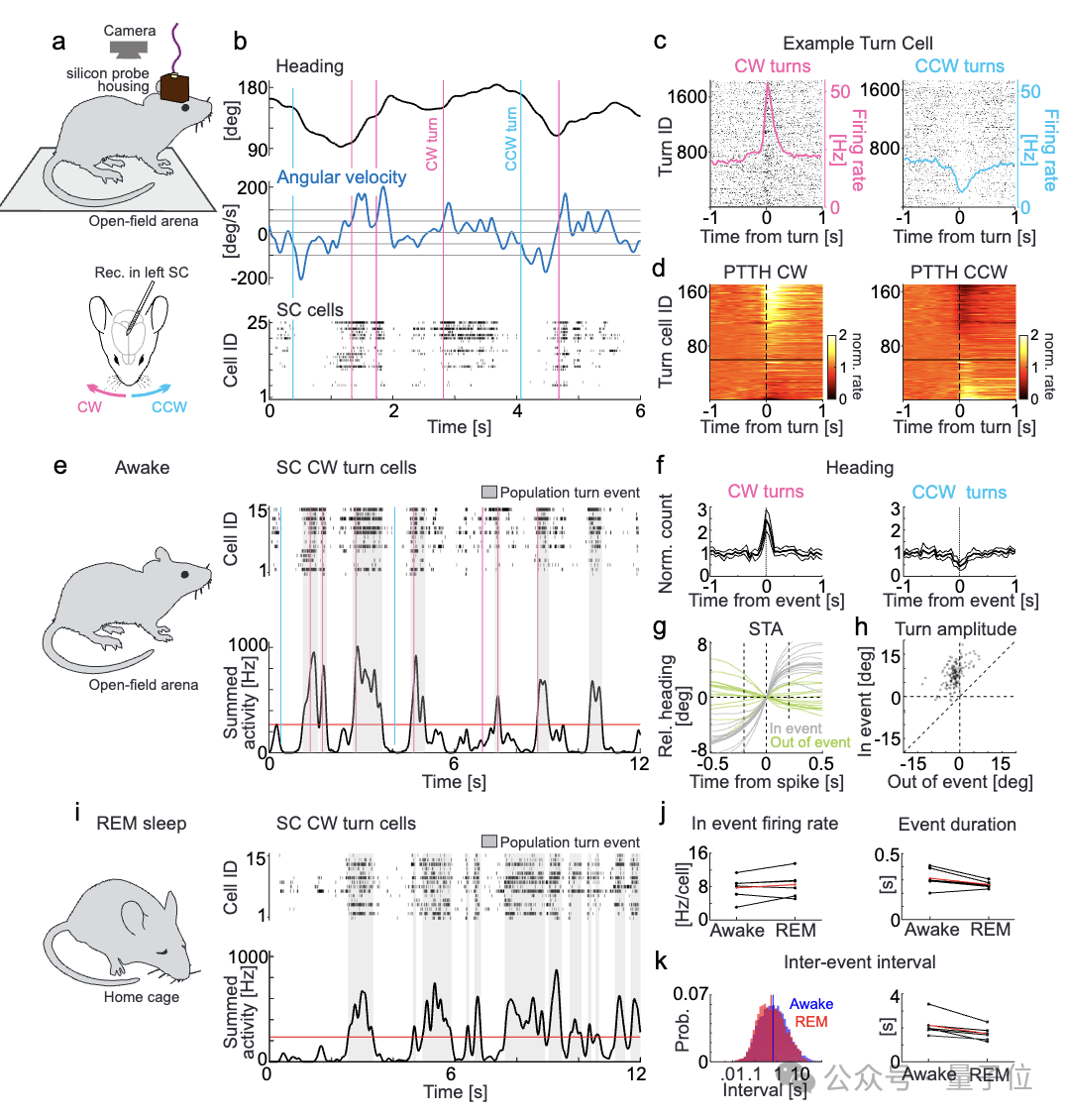 picture
picture
To understand whether these "motor commands" during sleep affect the brain's internal representations, the researchers simultaneously recorded the activity of head direction cells in the ADN.
They developed a decoder that can infer head direction from neural activity in the ADN, and this decoder was able to accurately predict actual head direction during wakefulness.
As a result, when applied to REM sleep data, the decoder showed "virtual head turns" --
Although the animal remained still, the internal representation of head direction in the brain was still changing.
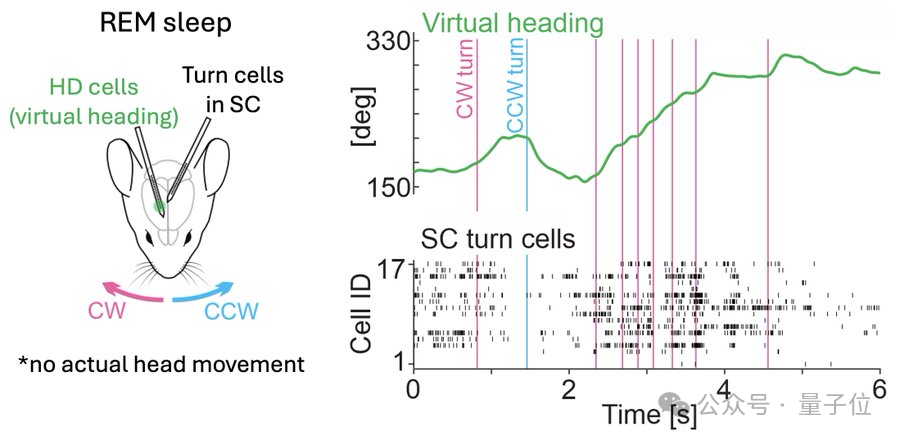 picture
picture
To demonstrate a causal relationship between superior colliculus activity and fictive head rotation, the researchers blocked activity in the right superior colliculus of mice using the drug tetrodotoxin (TTX).
The results also showed that this blockade led to a significant increase in virtual clockwise head rotation during REM sleep, and even continuous 360° clockwise virtual rotation.
These findings suggest that during REM sleep, the brain simulates actions and their outcomes, even if those actions are not actually performed.
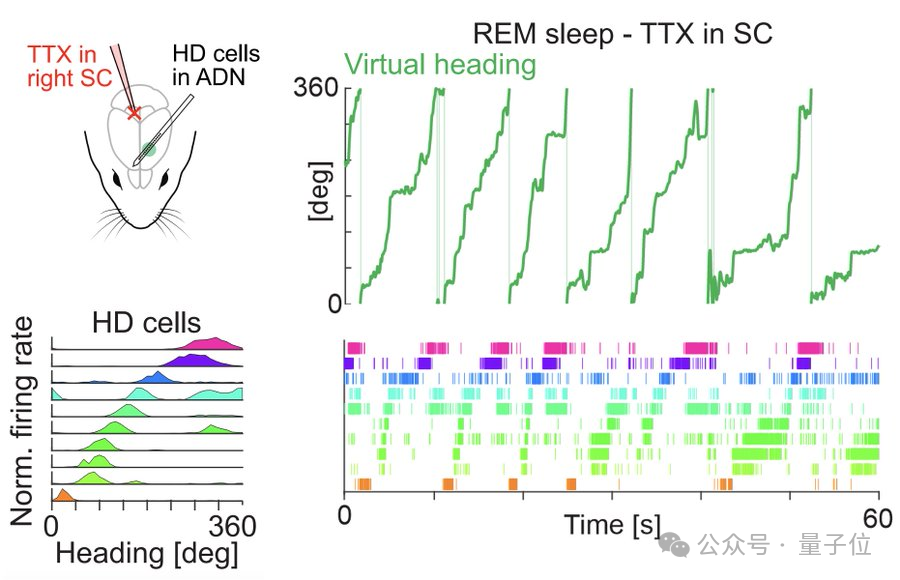 picture
picture
The brain’s internal “model of the world”
The researchers speculate that this simulation may rely on models inside the brain rather than external sensory feedback.
The lack of head movement excludes the involvement of the vestibular apparatus, and the lack of proprioceptive organs in the mouse external eye muscles also excludes the significant influence of proprioceptive feedback from the characteristic eye movements of REM sleep on changes in head direction representation.
The researchers also cited other studies to support this view.
For example, previous studies have shown that during REM sleep, our eyes move rapidly, a phenomenon that may reflect some cognitive activities of the brain during sleep.
Patients with unilateral neglect may be unable to perceive or notice one side of their visual field while awake. Interestingly, these patients' rapid eye movements during REM sleep show a tendency to move toward the side they normally neglect.
This suggests that even during sleep, these patients' brains are to some extent simulating or reproducing the cognitive patterns they experience while awake.
In addition, some studies have speculated that REM sleep itself helps to form and improve internal models.
Therefore, the researchers say, it is conceivable that the internal model that coordinates SC and ADN activity observed during REM sleep may also be operative in awake animals.
This would allow the brain to anticipate changes in head orientation before executing motor commands from the SC, thereby estimating head orientation in real time rather than relying on sensory feedback from the vestibular system.
If this model does work during wakefulness, the brain needs to have a mechanism to recognize the difference between predicted changes in head direction and actual changes, and adjust the prediction accordingly to correct possible errors.
Interestingly, however, during REM sleep, this error signal is suppressed. In the absence of this signal, our brain is free to perform simulations based on internal models, uncorrected by actual sensory input.
This ability to simulate freely may be the basis for our brain's creative thinking and dream generation during REM sleep or similar states.
This research attracted a lot of attention after it was published. The idea that sleeping is actually a form of "training" for the brain was also discussed by many netizens:
Sleep may be a training process, in which our brain needs to judge whether the information comes from the real world or its own neural network formed through training. When we can no longer distinguish between reality and fiction, the training is complete.
 picture
picture
The unrealistically adventurous dreams we have may not be designed to train us to handle unrealistic risks. Instead, they may be designed to train deeper mechanisms in our brains that we are not directly aware of. For example, dreaming about flying may help improve our visual-spatial processing abilities.
 picture
picture
What do you think about this?